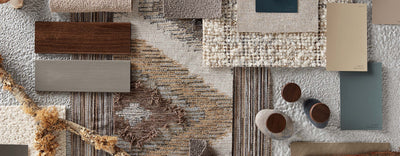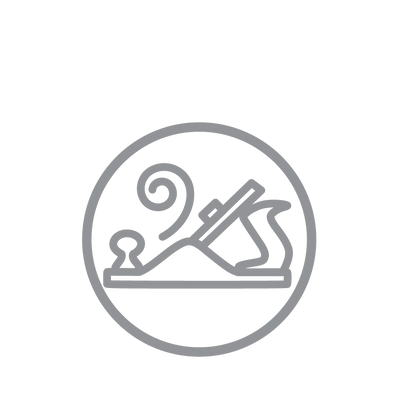
Stroll Through the Years at Fayetteville’s Stickley Museum
Darcy SmithShare
 Print
Print
[originally posted April 2021]
Shortly after Alfred and Aminy Audi purchased L. & J.G. Stickley from Louise Stickley in 1974, they discovered yet another legacy left behind by her late husband, Leopold. Stored in the basement of the company’s Fayetteville, New York, factory was a considerable collection of antique furniture that he’d acquired and squirreled away over many years: Dutch and German pieces from the Northern New York countryside that inspired his Cherry Valley colonial collection, as well as English pieces shipped back from his travels in Europe. Today, they are among the oldest furniture on display at The Stickley Museum, a fascinating retrospective housed in that very same factory building.

Building a collection
The Audis recognized the importance of this historic find and set about preserving it with some future opportunity for display in mind. Certain pieces, like the country church–inspired Deacon’s Bench, even found their way back into Stickley’s product line 40-odd years after first appearing in Cherry Valley. Others were kept in storage while the Audis continued to add to the collection by acquiring original Stickley antiques through auctions and private sale.
Old space…

Meanwhile, the Fayetteville factory building was undergoing changes of its own. It had operated for many decades as the heart of Leopold’s manufacturing business, and it continued to do so for another 10 years under the Audis (Mrs. Audi recalls a large metal door off the old finishing room where the growth of her three children was marked off!).
But by the 1980s, it was time to upgrade the Stickley facility, and a new factory

was built in nearby Manlius and opened in 1985. The Fayetteville building was sold for development into condos. Before that could happen, though, a fire tore through the structure and caused significant damage. The Audis bought the building back and started the long process of restoring and transforming it for a new purpose.
…new life
The first floor of the building came to house the Fayetteville Free Library in 2003. On the second floor, a number of factory workspaces were preserved in much the same state they’d been in for nearly a century. Between old timbers, the uninsulated walls carry remnants of graffiti and decoration left behind by generations of craftsmen and -women, from opera and boxing posters to magazine covers and chronicles of first snowfalls.



Museum from scratch
To help with the transformation, Mr. Audi brought in a team of students from SUNY Oneonta’s Cooperstown Graduate Program in Museum Studies. The students organized the collection, designed the display area, and wrote copy to tell the company’s story; their lead, Greg Vadney, went on to become the museum’s first director. Company historian Mike Danial had spent years gathering and preserving decades-old catalogs, drawings, and other reference materials and ephemera, all of which became a valuable part of the museum’s holdings.
 The Audis themselves donated items, including Mr. Audi’s childhood Cherry Valley bed and the terrace server that was a wedding gift to them from Louise Stickley.
The Audis themselves donated items, including Mr. Audi’s childhood Cherry Valley bed and the terrace server that was a wedding gift to them from Louise Stickley.
Finally, on April 11, 2007—Alfred Audi’s birthday—The Stickley Museum held its grand-opening celebration, including a special dinner for past and present employees who had worked in the old factory.
birthday—The Stickley Museum held its grand-opening celebration, including a special dinner for past and present employees who had worked in the old factory.


Living History

 To walk the museum today is to watch a brand evolve through history, and to see that, in Mrs. Audi’s words, “Stickley is a lot more than Mission.” You’ll see (with the aid of a particularly gaudy Victorian chair!) how Gustav Stickley was inspired to create an American interpretation of the Arts and Crafts movement, and later how his brother Leopold kept the Stickley brand relevant after Mission’s initial popularity waned.
To walk the museum today is to watch a brand evolve through history, and to see that, in Mrs. Audi’s words, “Stickley is a lot more than Mission.” You’ll see (with the aid of a particularly gaudy Victorian chair!) how Gustav Stickley was inspired to create an American interpretation of the Arts and Crafts movement, and later how his brother Leopold kept the Stickley brand relevant after Mission’s initial popularity waned.
You’ll see examples of Stickley’s signature construction techniques, classic pieces brought back into the fold (a Prairie Settle from the famous Christie’s auction of Barbra Streisand’s Stickley collection), and masterpieces like the Bombé Chest-on-Chest from the Colonial Williamsburg collection, once featured on the cover of Furniture Today.
brought back into the fold (a Prairie Settle from the famous Christie’s auction of Barbra Streisand’s Stickley collection), and masterpieces like the Bombé Chest-on-Chest from the Colonial Williamsburg collection, once featured on the cover of Furniture Today.


Look for the original chair that inspired Leopold’s Chair, and sit in the extra-wide chair we built for an appearance by His Holiness the Dalai Lama in 2006.
 And since every Stickley prototype is preserved, you’ll also experience new classics like our award-winning Park Slope Accent Chair. The Stickley Museum is a must-see for furniture lovers and history buffs, and a fun experience for those just being introduced to American furniture design and craft.
And since every Stickley prototype is preserved, you’ll also experience new classics like our award-winning Park Slope Accent Chair. The Stickley Museum is a must-see for furniture lovers and history buffs, and a fun experience for those just being introduced to American furniture design and craft.
Additional sources:
Mrs. Aminy Audi, CEO and Chair of the Board
The Stickley Museum (Amanda Clifford, Director)








